Clam Pasta with Spicy, Toasted Breadcrumbs
This pasta is my favorite pasta, bar none. For me, clam pasta is a decidedly summery meal, and you should be making it at least once before summer is over.
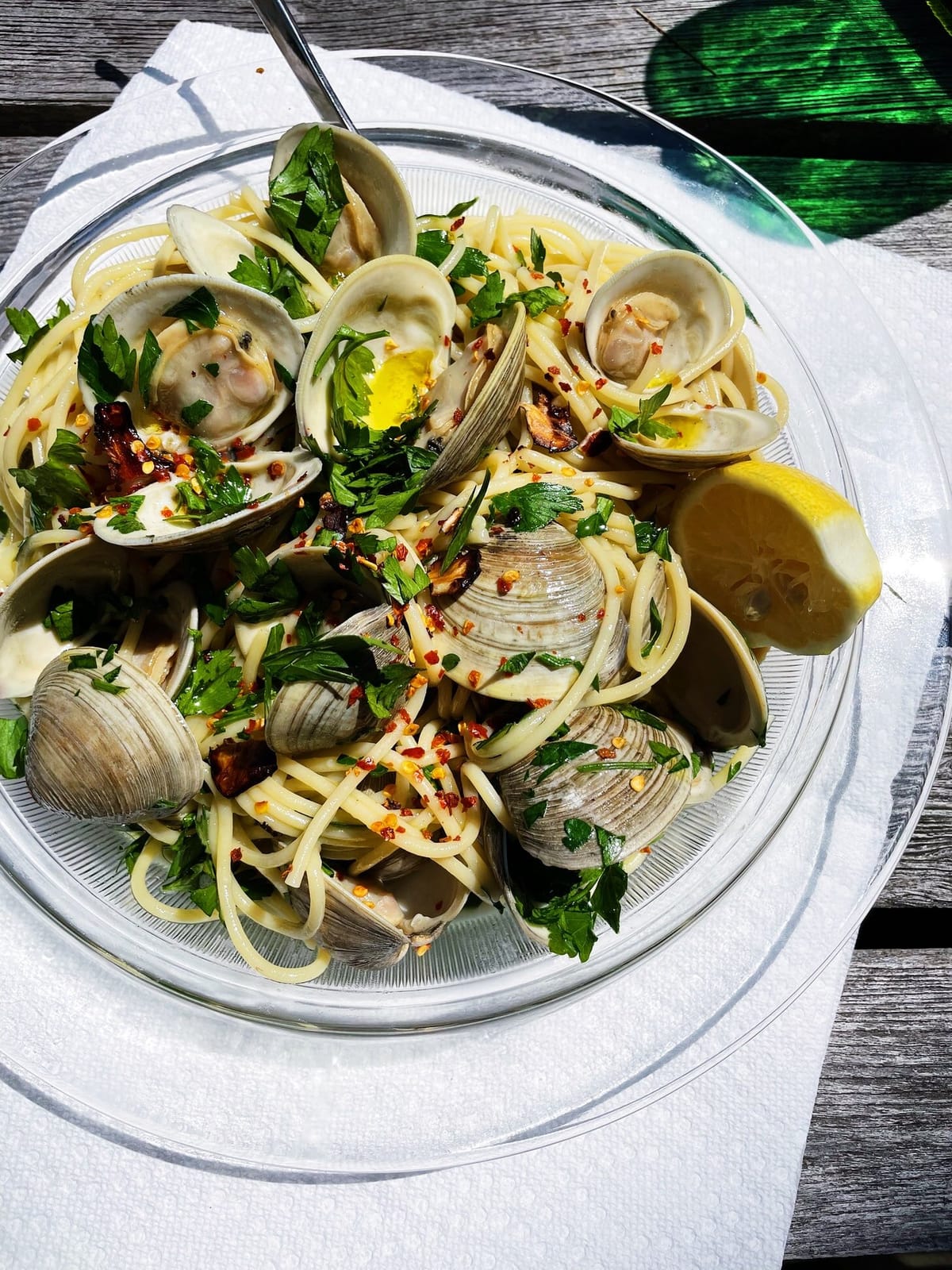
YIELD — 4 servings
Not unlike shrimp scampi, the excellence of this recipe depends on a saucy, brothy, garlicky wine sauce that should be good enough to drink on its own before adding your extremely al dente pasta to finish cooking in said sauce. The main difference between scampi and this though is A. there is no butter here and B. the clams are giving you a LOT of liquid (shrimp only take— something to think about!), which you can truly flavor however you like. I’m partial to the raw and toasted garlic with lemon, but you could go chili flake and shallot, add a chopped fennel bulb, maybe even start the clams with some sausage. Whether you stick to this recipe or go off on your own journey, just remember to make sure the clams are rinsed to the best of your ability (can’t pick sand out of pasta). Oh, and you may notice there’s no pasta water reserved: congratulations, you don’t need it! There should be more than enough clam juice in the pot to do the job.
Ingredients
- 3–4 pounds small clams, such as littlenecks, manilla or new zealand* (littlenecks are often sold by the dozen— I average about 8–10 clams per person, so do the math based on how many people you’re feeding)
- ⅓ cup olive oil, plus more for drizzling
- ¾ cup coarse bread crumbs or panko
- Kosher salt, freshly ground black pepper
- Crushed red pepper flakes
- 10 cloves garlic, 8 thinly sliced, 2 grated
- 1 lemon, halved and peel finely chopped
- 1 cup dry white wine such as verdejo or pinot grigio
- 1 pound linguini, fettuccini or spaghetti
- 1 cup finely chopped parsley or chives
Preparation
- Wash the clams well under cold running water, paying special attention to the hinge where the two shells meet (that’s where most of the dirt/sediment sticks). If the clams are very fresh or look especially dirty, you can place them in a large bowl of cold water and let them soak for an hour or two so they can filter out the sand/sediment (not always necessary, but I like to if I can think to plan ahead).
- Set a large pot of salted water on to boil.
- Meanwhile, heat half the olive oil in another large pot (or skillet) over medium–high heat. Add bread crumbs and season with salt and pepper. Cook, tossing occasionally until they’re well toasted and evenly browned, 3–5 minutes. Add as much crushed red pepper flakes as you’d like and remove from heat. Transfer them to a small bowl and set aside.
- Wipe the pot or skillet from any lingering crumbs, then add remaining olive oil over medium–high heat. Add sliced garlic and cook, stirring occasionally until the garlic is lightly browned, 2–3 minutes. Add chopped lemon peel and let it fry in the garlic oil for about 30 seconds. Add the white wine and clams, season with a little salt, and bring to a simmer. Cook uncovered, only shaking the pot occasionally, letting the clams steam open inside, 8–12 minutes (this will take longer with larger or thicker-shelled clams).
- Using a slotted spoon, transfer the clams to a large bowl, leaving any liquid behind (any clams that came out of the shells can stay behind, too—you’re just trying to remove the shells).
- Meanwhile, boil the pasta until right before al dente (this step is important! It should be not quite cooked through because you’ll continue to cook it in the clam broth you’ve just made).
- Drain the pasta (or simply lift the pasta from the pot using tongs). Add the pasta to the clam liquid and bring to a simmer. Cook for 4–6 minutes, occasionally tossing with your tongs to make sure all the pasta is getting even attention from the liquid and encouraging the sauce to thicken.
- Taste a pasta strand and make sure it’s well seasoned and cooked through, adding more salt or pepper as needed. Add grated garlic to the pot and stir to combine. Add the clams back to the pot along with half the parsley and toss to coat. Transfer to a serving bowl and top with remaining parsley, a drizzle of olive oil, and the juice from the halved lemon. Serve with toasted breadcrumbs.
Note: *I say 3–4 pounds because the smaller, thin-shelled clams like manilla or New Zealand have thinner shells and you’ll need fewer (closer to 3 pounds). I find the littlenecks to be very heavy so I tend to compensate and get closer to 4 pounds.
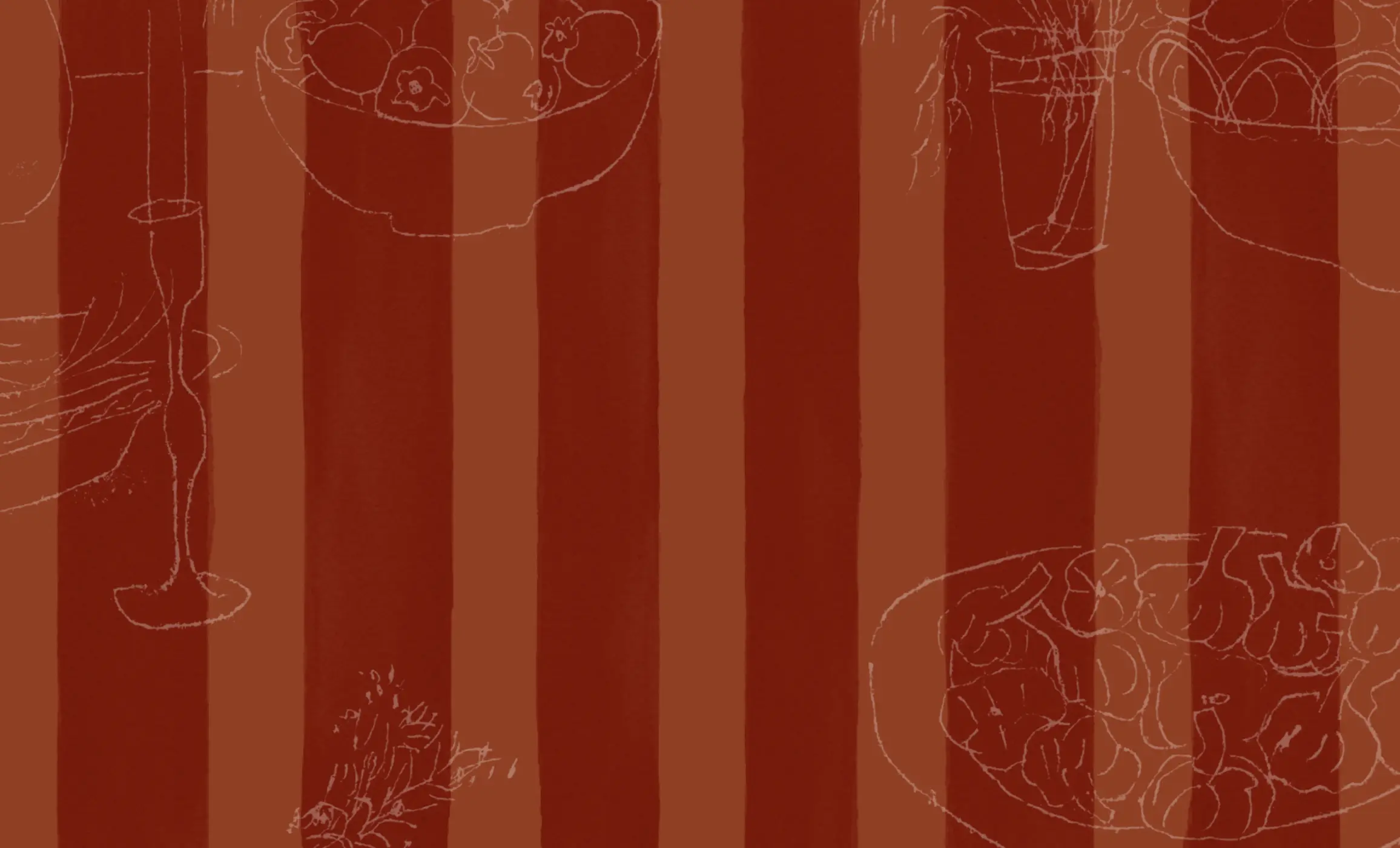
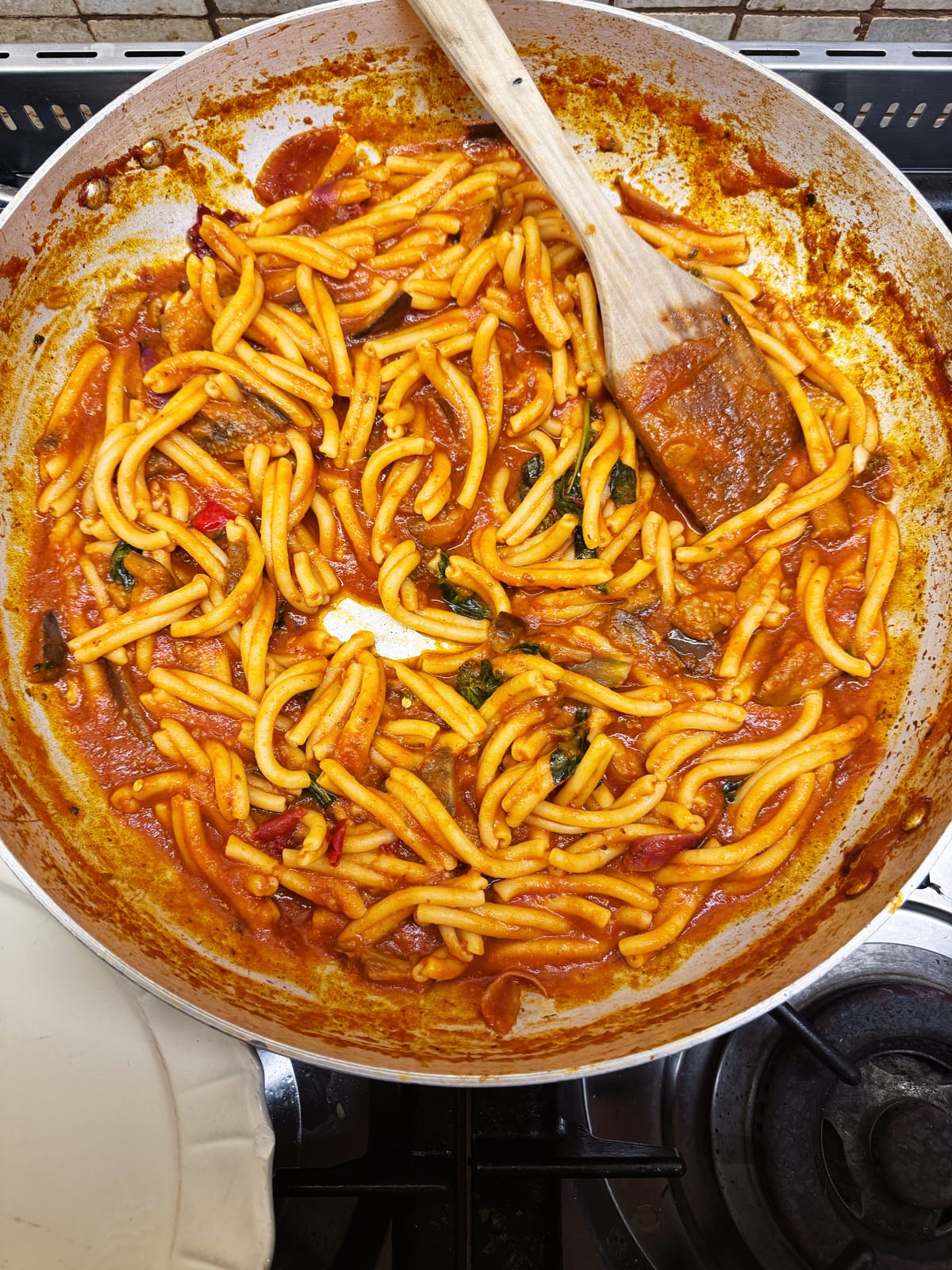
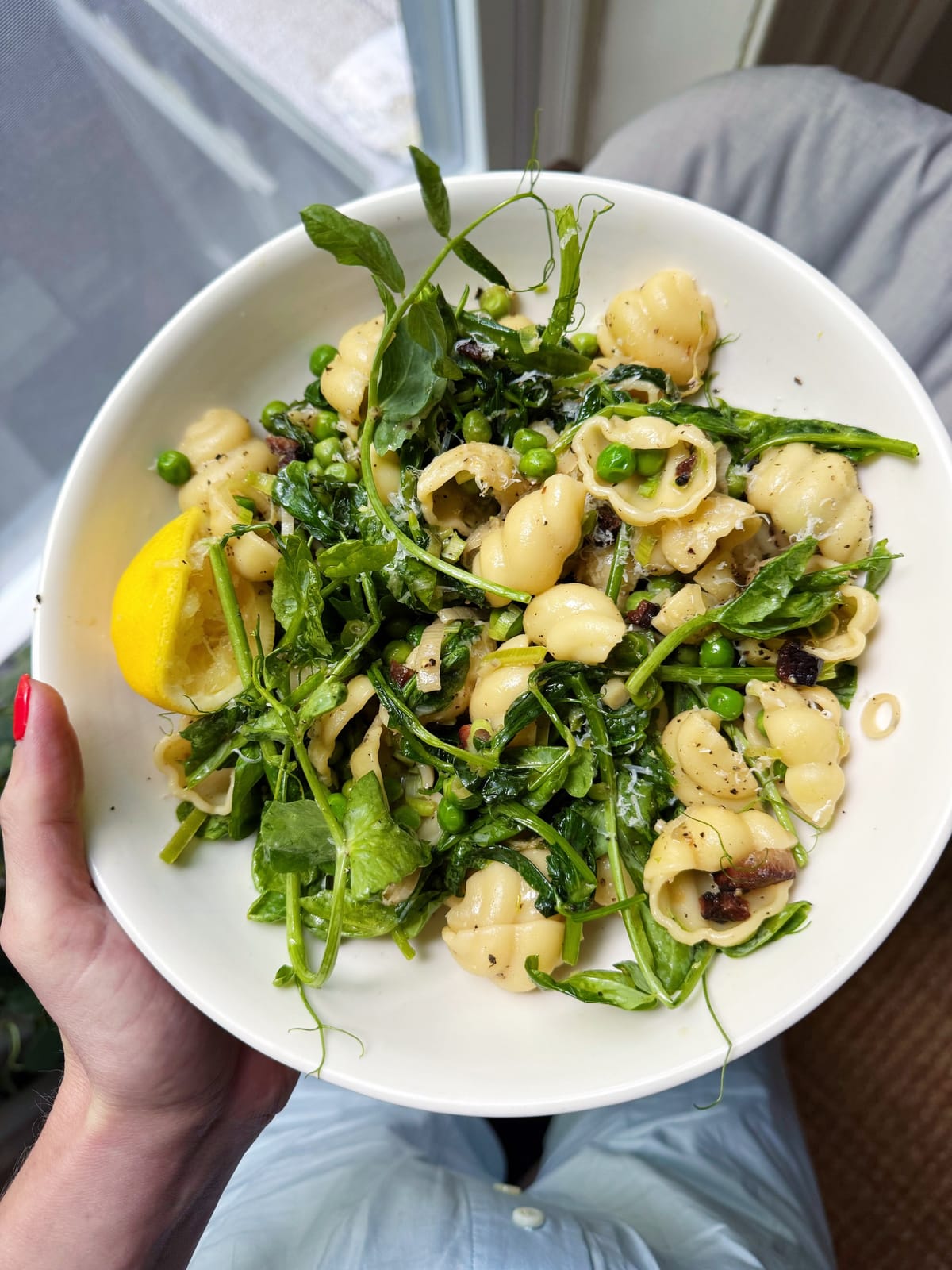
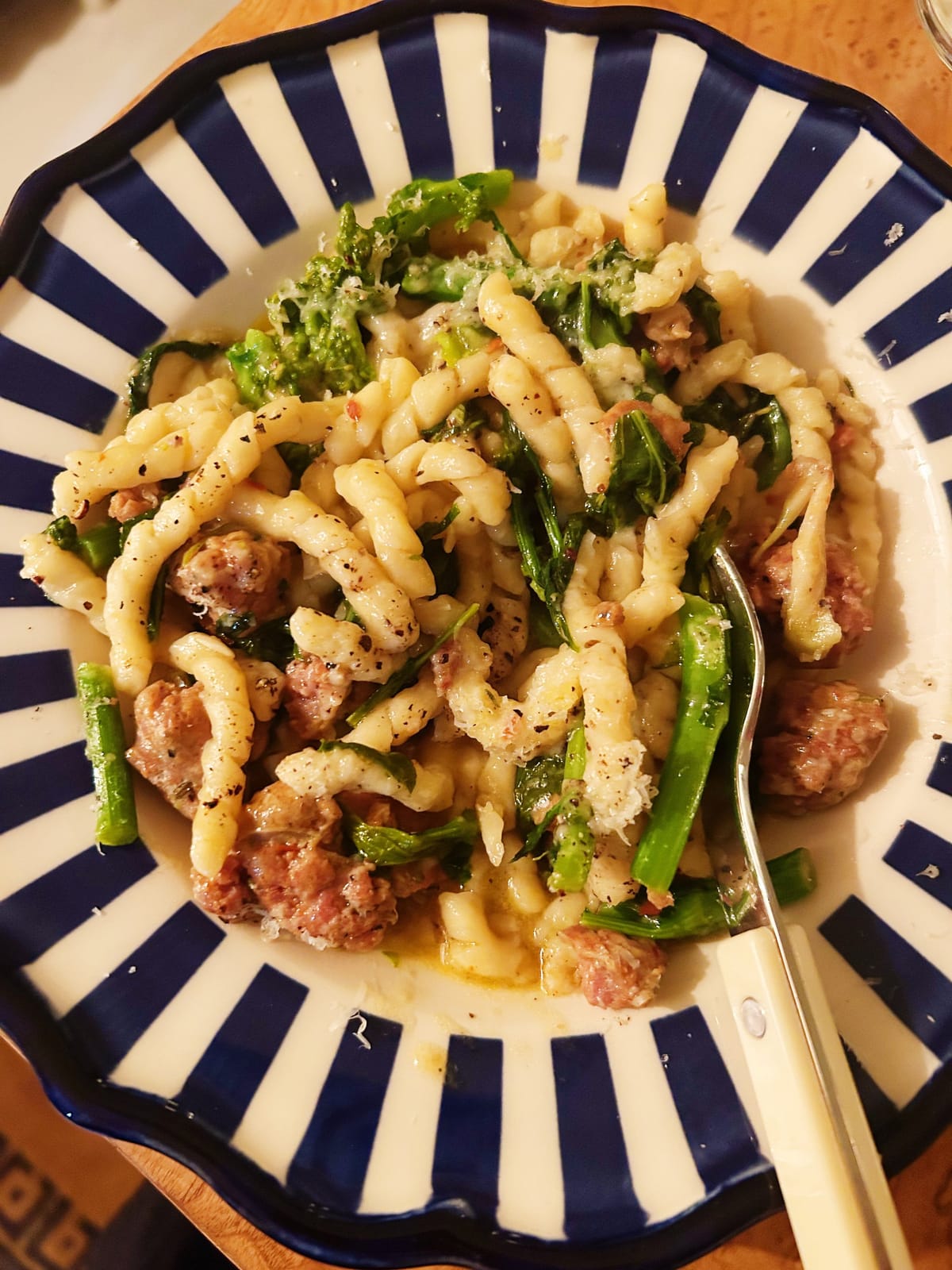
Discussion